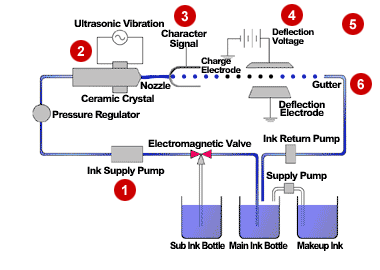Hitachi industrial continuous inkjet printers provide proven, state-of-the-art technology with over 35 years of experience. Hitachi inkjet printers are suitable for a variety of marking and coding in packaging applications, right from high-speed, micro to large character printing.
The following diagram illustrates the principle on which Hitachi industrial continuous inkjet printers work. To print a character on the product, individual drops of ink are electronically controlled to the correct positions.


